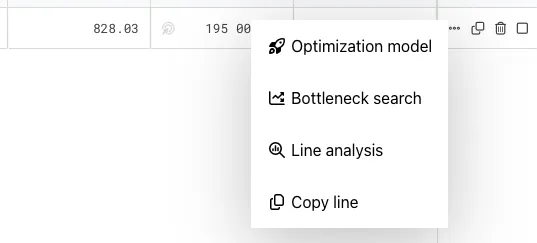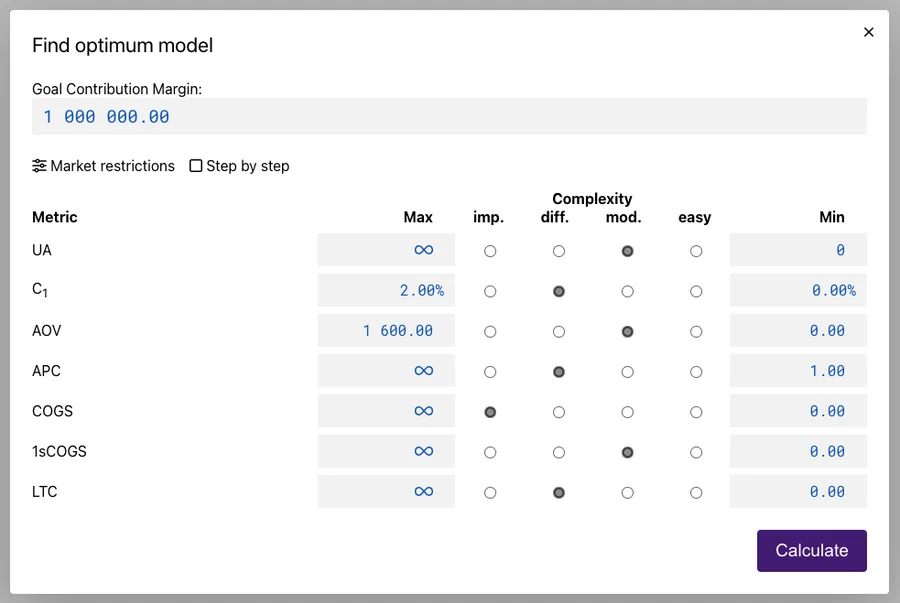Unit Economics in Practice: How to Improve Key Metrics for Maximum Profit
Podcast created by NotebookLM by Google
When you first start working with unit economics, after calculating the marginal profit for your business model, you might wonder: "How can I achieve better results?" You want to understand how to adjust your business processes to reach a higher level of profitability.
Essentially, the question boils down to finding an optimal configuration of unit economics metrics that describe your business processes and allow you to achieve the desired level of marginal profit.
Let’s consider this using an example of unit economics calculation in the ueCalc service. Suppose we have a business with the following metrics: UA = 15,000, C1 = 1.57%, AOV = 1,400.00, COGS = 900.00, APC = 2.00, and LTC (CPA) = 13.00. To analyze, simply input these data into the free "Basic Unit Economics Model" template and get a string of results.

Now, we need to determine the metric values at which our unit economics will reach a marginal profit of 1,000,000.
On the one hand, the task seems straightforward since there are numerous configurations where this is possible. On the other hand, there are several constraints that limit the number of configurations we can use.
Constraints
There are three types of constraints: market, competitive, and mathematical.
Market constraints. These prevent metrics from exceeding limits defined by market size. For example, if achieving 1,000,000 requires attracting 1,000,000,000 new units, it is unrealistic for most businesses. The same goes for products with high prices — the market for such products will be constrained by the purchasing power of customers.
Competitive constraints. These are related to your experience and skills. Each metric should be realistic for your business. For instance, can you increase your conversion rate from 1.00% to 3.00%? It's essential to assess not only the boundaries of improvement but also the complexity of achieving such changes.
Mathematical constraints. Some unit economics metrics simply cannot exceed certain limits. For example, the conversion rate cannot be higher than 100%, and the number of transactions per customer (APC) cannot be less than 1.
Optimal Configuration
The ueCalc service allows you to automatically find the optimal configuration of metrics using Goldratt’s theory of constraints. Simply specify your constraints, and the system will automatically calculate the optimal values to achieve the desired marginal profit.
To do this, select "Find Optimal Model" from the row menu.

In the window that opens, configure your constraints and enter the target marginal profit.

As a result, the service will calculate the optimal configuration, considering all your constraints. For example, increasing the conversion rate from 0.50% to 0.60% will be easier than from 0.60% to 0.70%.

Now you have an understanding of the metrics you need to achieve to ensure your business’s planned marginal profit.
To say thank you and show support for future content.
50€/annually
To gain access to commentary and content, please consider subscribing.
If you're already a customer, just log in.
we do not store your email, only the encrypted hash, which increases the security of your email.